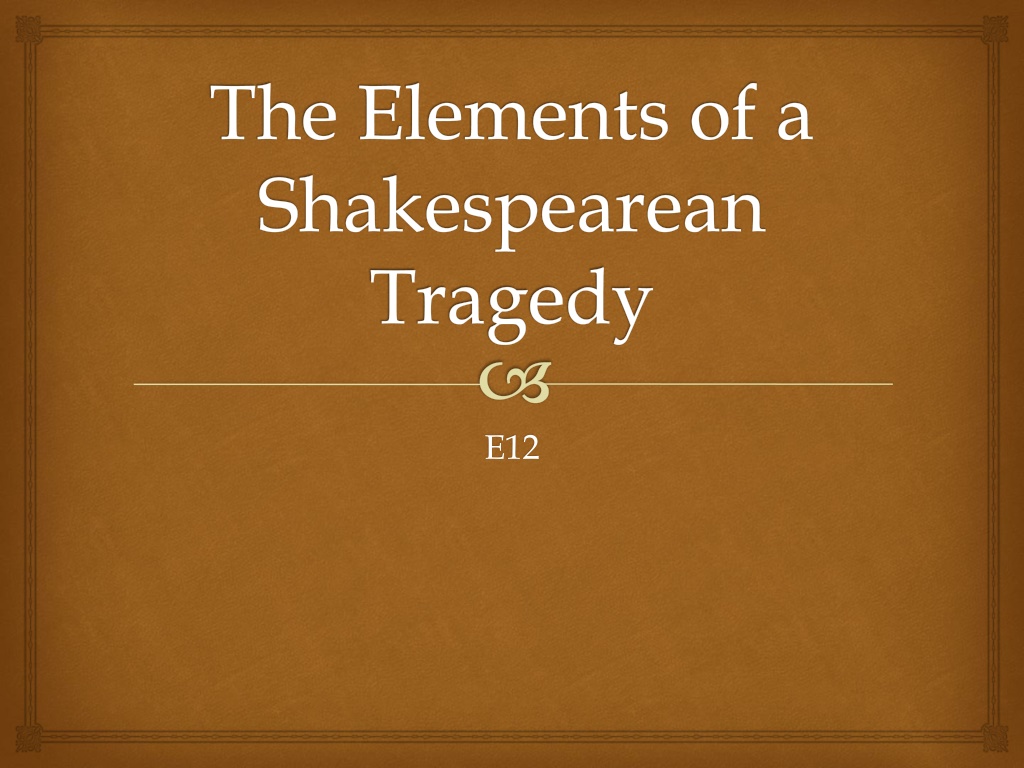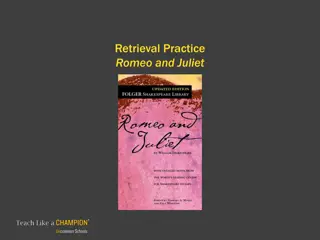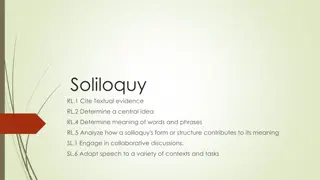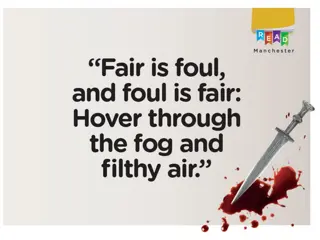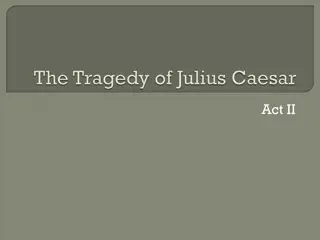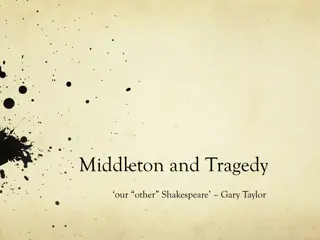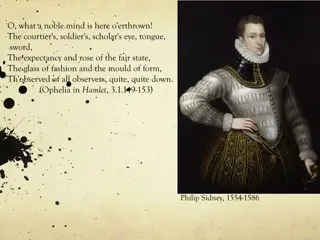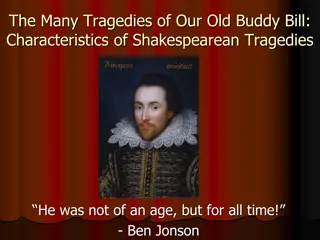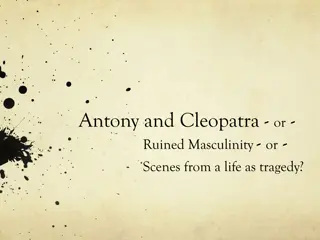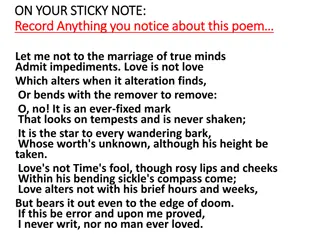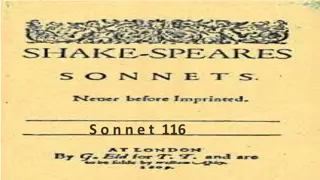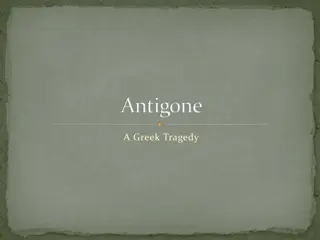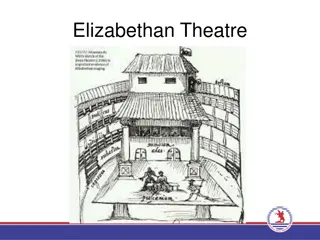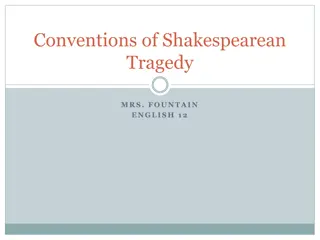Exploring the Elements of Shakespearean Tragedy
Delve into the key components of a Shakespearean tragedy, from the concept of the tragic hero to the role of human flaws and responsibility. Discover how only great men qualify as tragic heroes and the significance of hamartia in leading to their downfall. Uncover the common qualities of the tragic hero and the presence of the abnormal, supernatural, fate, fortune, and chance in Shakespeare's works.
Download Presentation

Please find below an Image/Link to download the presentation.
The content on the website is provided AS IS for your information and personal use only. It may not be sold, licensed, or shared on other websites without obtaining consent from the author. Download presentation by click this link. If you encounter any issues during the download, it is possible that the publisher has removed the file from their server.
E N D
Presentation Transcript
The Elements of a Shakespearean Tragedy E12
THE TRAGIC HERO, IN GENERAL Usually, there is only one tragic hero The so-called "Love Tragedies" are exceptions to the rule
THE TRAGIC HERO AND THE TRAGIC "STORY" The tragic story leads up to, and includes, the death of the hero The suffering and calamity are exceptional -The hero undergoes a sudden reversal of fortune. -This reversal arouses the emotions of pity and fear in the audience, which is called catharsis. (A higher power that may smile on the hero one moment, and the strike the prideful hero down in the next.)
ONLY GREAT MEN QUALIFY AS TRAGIC HEROES Peasants (merely because they're human beings) do not inspire pity and fear as great men do A Shakespearean tragedy, then, may be called a story of exceptional calamity leading to the death of a man of high estate!
TRAGEDY, HUMAN FLAWS, AND RESPONSIBILITY The calamities of tragedy proceed mainly from actions, and those, the actions of men Shakespeare's tragic heroes are responsible for the catastrophe of their falls.
Hamartia Hamartia (Greek)- In tragedy, the quality within the tragic hero/heroine which leads to his/her downfall. The fall often takes the form of an obsession. Examples of Shakespearean tragedies: Macbeth s obsession with power. Othello s jealousy. King Lear s gullibility and lack of good judgment.
COMMON QUALITIES OF THE TRAGIC HERO/PROTAGONIST Shakespeare's tragic heroes need not be "good," though they generally are good Shakespeare's tragic heroes illustrate the sense of waste
THE ABNORMAL, THE SUPERNATURAL, FATE/FORTUNE/CHANCE Shakespeare occasionally represents abnormal conditions of mind: insanity, somnambulism, hallucinations Shakespeare also introduces the supernatural: ghosts and witches who have supernatural knowledge Shakespeare, in most of the tragedies, allows "chance" in some form to influence some of the action--
Conflict Types: External and Internal As you might suspect, the action of the protagonist/tragic hero is most often motivated by external and internal conflicts, which lead to complications from which further conflicts arise--all in a kind of snowballing effect, driving the action toward a tragic resolution.
TRAGIC CONFLICT: EXTERNAL Usually there are two persons, of whom the hero is one---OR, Two Parties or Groups, one of which the hero leads-- -OR, The passions, tendencies, ideas, principles, forces which animate these persons or groups.
TRAGIC CONFLICT: INTERNAL Shakespeare's tragic hero, though he pursues his fated way, is, at some point, torn by an inward struggle A comparison of the earlier and later tragedies shows this struggle is most emphasized in the later tragedies The conception of outer and inner struggle includes the action of "spiritual forces."
THE TRAGIC PATTERN Start Intrusion of Time and a Sense of Urgency A Man of High Estate A Flaw in Character Misreadings and Rationalizations Tragic Murder, Exile, Alienation of Enemies and Allies Gradual Isolation of the Tragic Hero Recognition of the Flaw by the Tragic Hero: too late Mobilization of the Opposition Last, Audience Recognizes Potential for Greatness Courageous Attempt to Restore Lost Honor/Greatness Death of the Tragic Hero Restoration of Order
Another Way To Look At The Pattern Good in the hero s world/universe Evil disrupts the hero s world/universe Chaos in the hero s life Final Conflict of good and evil Hero s realization of the truth Death of the hero/heroine Re-assertion of good and restoration of order
TRAGIC STRUCTURE IN THE PLAYS As a Shakespearean tragedy represents a conflict which ends in catastrophe, any such tragedy can be divided into 4 parts: EXPOSITION DEVELOPMENT/RISING ACTION DEVELOPMENT/FALLING ACTION RESOLUTION
Keep All of This In Mind As we read Hamlet! Ask yourself Does Hamletfollow the tragic pattern ? Is the character Hamlet a tragic hero? If so what are his flaws? Does the play break any of the rules that we covered today?
